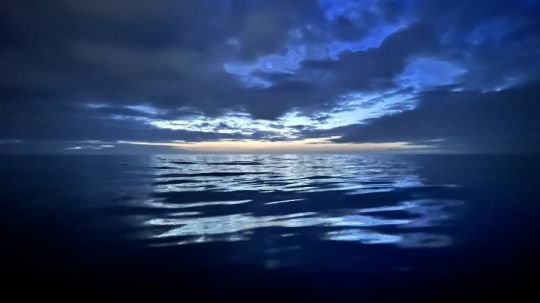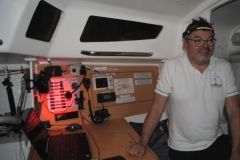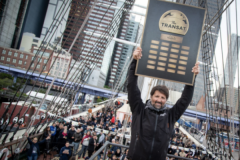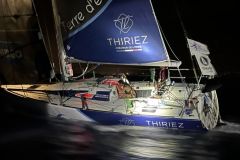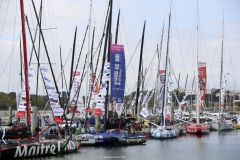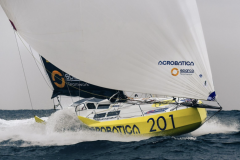From La Trinité-sur-Mer to Fort de France, the Cap Martinique takes amateur sailors along a route that is well known to professional skippers, linking Brittany to the West Indies. As recently as 2024, these seasoned sailors were able to discover the joys of sailing between sargasso and the sometimes unstable trade winds. Memories tinged with an unavoidable sadness when Philippe Benoiton passed away at the start of the race, reminding us of the risks involved in such an undertaking.
A race in two acts
The crossing, which began off the coast of Brittany, was a complex one, forcing the sailors to cross the Bay of Biscay and round the very windy Cape Finisterre in northeast Spain. Here, Oscar and Victor Gerin-Planète Urgence reported a shallow, short sea of 4 m, with 35 knots established at times, and gusts to over 40 knots: '' The breakers were covering us, and we weren't doing ourselves proud on our little boat... Maneuvers were done tied up and on all fours. north-easterly winds then propelled the yachts along the Spanish and Portuguese coast at a steady pace of around 10-15 knots. Ideal weather conditions gave the crews starry nights, smooth seas and perfect visibility, creating a dreamlike picture for the rest of this first leg.
After crossing Madeira, the participants waited impatiently for the arrival of the trade winds, which were supposed to propel them towards the finish line in Martinique. This wait was marked by a series of successive gybes, dictated by the wind's capricious oscillations. Each crew had to finely adjust their sheets and steer constantly to get out of the wind. Spending time in front of the computer became a routine for everyone, to fully understand the subtleties of wind variations. As we approached a low-pressure area, the winds finally became more steady and strategies were put in place. For Jérôme Apolda and Stéphane Ayrault-Echo Mer, it was a question of playing with the wind in its northerly part, as there were no trade winds to the south, by seeking out the curvature of the low on the starboard side. The first to benefit from these favorable conditions were able to gain a decisive advantage over the rest of the race.
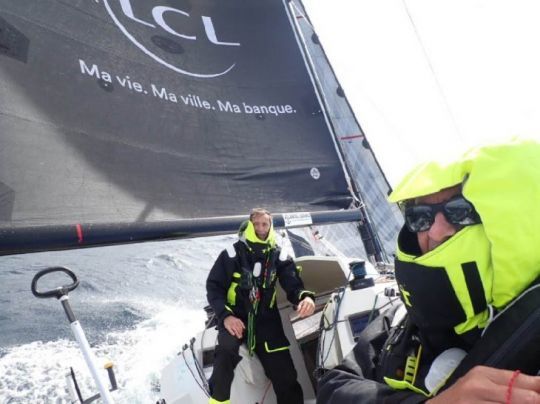
For the others, it was an opportunity to give it their all, juggling the most precise settings according to the changing weather conditions. Pierre-Henri Almaric and Bruno Salle of Chou-Papa au Rhum pour L'envol explain that they have adopted a '''no-frills''' approach to sailing offensive strategy: aiming to overtake other competitors one by one, while maintaining a friendly attitude towards their fellow competitors ''. The change of course to the second quarter of the compass marked the ideal moment to use their symmetrical spinnaker, which they mastered perfectly. Their determination was rewarded by steady progress, with a gain of five places in just 24 hours, propelling them to 16th place at the halfway point.
Over the last few days, everyone has been able to claw back precious miles, despite the fatigue and energy spent maneuvering in squalls and calms.
The sargassum problem
After Madeira, most of the competitors were confronted with a surprising amount of sargassum, seaweed that clings to daggerboards and rudders, slowing the progress of the yachts.
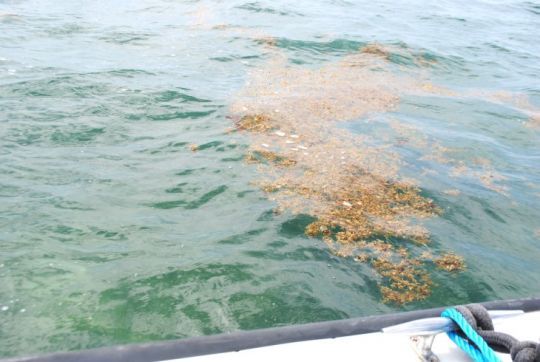
Despite these obstacles, the sailors remained determined and organized. Routines were established: loading GRIB files, weather analyses, tracking competitors, making adjustments to the boat, and cleaning the keel and rudders in the face of this unexpected invasion. Ludovic Gérard-Pure Ocean, who was very surprised to find a dense bank of sargassum in a sea that was already approaching 19.5°C after passing the Canary Islands, warns us of the scale of the problem: '' What about underwater life in such conditions? What about plankton, which plays an essential role in climate regulation? 30% of the CO2 produced is absorbed by planktonic species, which therefore play an essential role in climate stability. For the past 4 years, I've been an ambassador for the Pure Ocean Foundation. The foundation seeks to raise public awareness of the need to preserve the oceans, and each year funds research projects all over the world. These projects are selected by a rigorous scientific committee, and plankton is at the heart of the Microcean project: scientists will sequence the genome of planktonic species to better understand their interactions with our environment ''.

Everyone had to resolve to clean their boat's appendages using their own techniques in order to continue the race in good conditions. Regis Vian-École Jules Verne du Mans, who also had to deal with scattered packets of sargassum, explains that he had to set up a cleaning ritual using a knotted rope to pass under the keel and a curved seaweed rod for the rudders, in addition to having installed a camera in the hull to monitor the condition of the keel.
Successive abandonments and a tragedy
Before the start of the final stretch of the transatlantic race, 7 of the 60 boats at the start had to retire. The Trophée Estuaire Rose, skippered by Alexandre Ozon, had to abandon in Porto due to a rigging problem, with a broken stem. SL Energies France Renouvelables, skippered by Laurent Charmy and Pierrick Letouzé, retired in La Coruña due to a rudder problem. Tanjomoha, skippered by Laurent Bory Cabaud, encountered a rigging problem in Vigo, resulting in its retirement. Similarly, Shaka, sailed by skipper Quentin Froment, was forced to retire in Cascais due to a damaged rig, with a torn sail. Pour Ferdinand, sailed by skippers Olivier and Vincent Lunven, was forced to retire in Porto due to an energy problem. Opale A Chacun Son Everest, skippered by Yann Gindre and Michel Foucart, also had to retire in Porto after its boom broke. Finally, Adrien Kuttel of Sentinel Ocean Alliance was forced to retire in Madeira due to autopilot damage.
The editorial team congratulates all the amateur skippers for daring to take up this challenge and for continuing to sail with perseverance, despite the tragic loss of Philippe Benoiton, who was found at sea. This loss is a reminder of just how important crossing the Atlantic can be. '' This forces us to be even more cautious in our maneuvers, and to be constantly strapped in. Bodies, minds and boat put to the test '' recall Éric Bastard and Alexandre Castelnau-Ishsha for L'arche la Belle Porte. At sea, the beauty of certain moments allowed some, like Paolo Mangione-Mon Bonheur à moi, to take comfort from their immense sadness, before continuing on their way.
